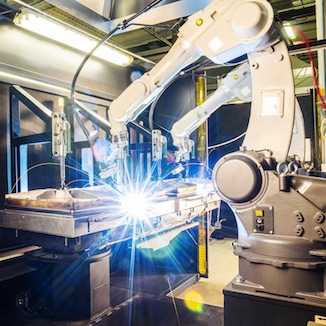The transformation of the digital and technological sphere has lead to a progression toward convergence. To understand the benefits of convergence for industry enterprises, manufacturers must took a look at how this development has affect the IT and manufacturing industries thus far. This blog will address the rise of convergence within the IT industry and where manufacturers can expect to see convergence in the future of manufacturing.
Convergence Rises Within the IT Industry
Convergence has shown relevance to the IT industry for some time now. For example, organizations used to operate data and voice through different networks, which would mean that they would both require their own hardware, software, cabling, management and support personnel. Eventually, Voice over IP was created, unifying the two disciplines. The value of the landline telecom market has declined since and was quickly replaced by cellular networks and services such as Skype or WhatsApp.
Even within IT itself, full teams were devoted to networking, storage, and servers, desktops, applications and databases servers. Many times, these groups worked poorly together, exerting territorial rights over their corresponding subdivisions at the expense of efficiency. Over time, virtualization, IT convergence and software-defined computing have largely brought these features together along with lower costs and higher efficiency. The lucrative server and storage markets have become commoditized. Companies that once dominated such as Compaq, EMC and Sun Microsystems have been absorbed as part of the consolidation wave. New players such as Amazon, VMware and Google have emerged as they were quicker to grasp the extent of disruption and conquer new markets.
The Future of Manufacturing: IT and OT Convergence
Within the manufacturing industry, convergence has begun to take place as well. Informational Technology (IT) and Operational Technology (OT), until recently, operated in isolation. Operational teams ensured manufacturing equipment ran smoothly, assembly lines functioned properly and products were produced at the desired level of speed and quality. IT managed ERP and other systems, kept software and compute hardware running and maintained the IP network. Each had their own protocol, hardware and development language preferences. Management was required to reconcile disputes, which would result in project delays, overspending and general inefficiency.
However, IT and OT are inexorably coming together. The sheer complexity and volume of OT systems requires a higher level of efficiency than ever before. The Internet of Things (IoT), advanced robotics, digitization, and additive manufacturing are changing the face of manufacturing. Even traditional players in stable industries can reap great rewards by converging their IT and OT operations.
In the oil and gas industry, OT personnel managed seismic, geological and drilling records. Specialized workstations and highly trained technicians assisted with data analysis. The convergence of the OT database with IT resources has minimized the time for data collection from a few weeks to a few hours. Every sector of discrete manufacturing, aerospace and every industry is likely to uncover similar insight and opportunity when it achieves IT/OT convergence.
iBase-t Solumina provides the platform that manufacturers need for the convergence of IT and OT. For more information, check out iBaseT’s Building a Foundation for Digital Manufacturing whitepaper.






